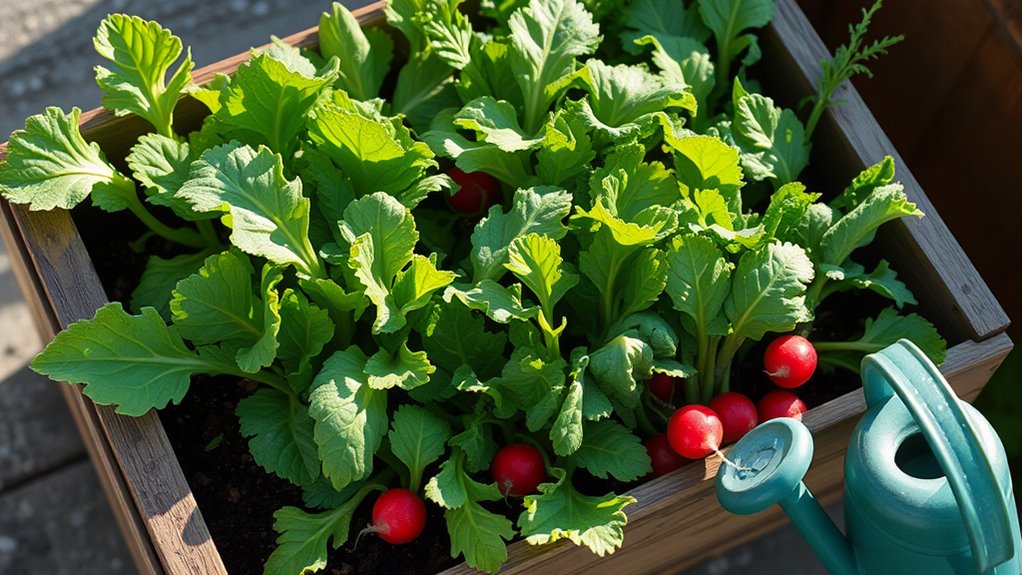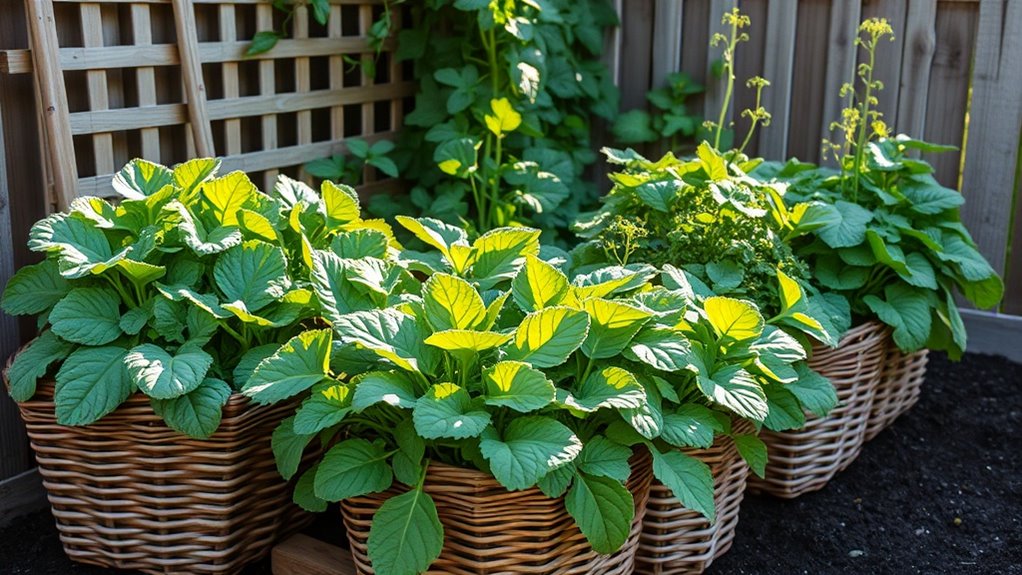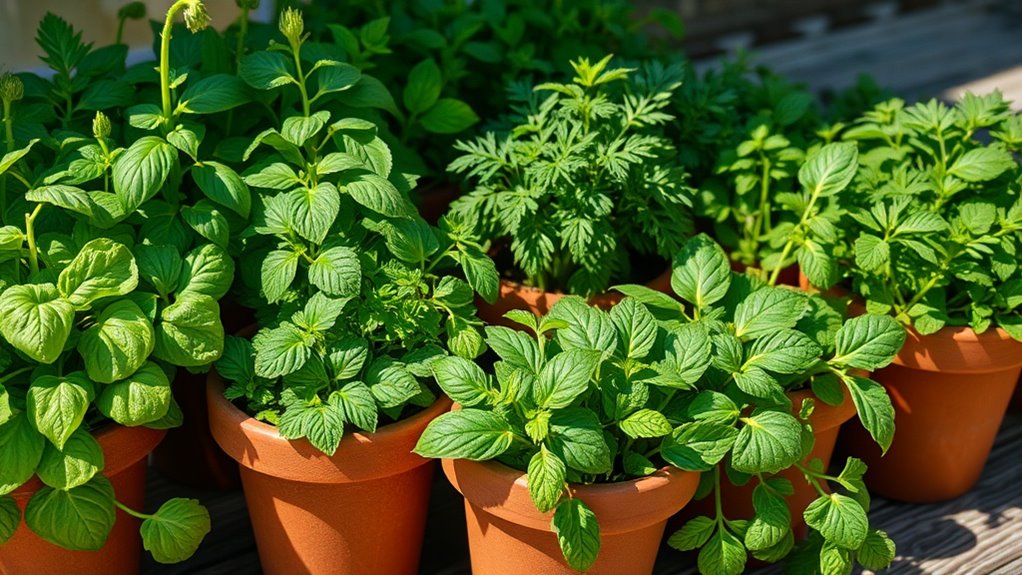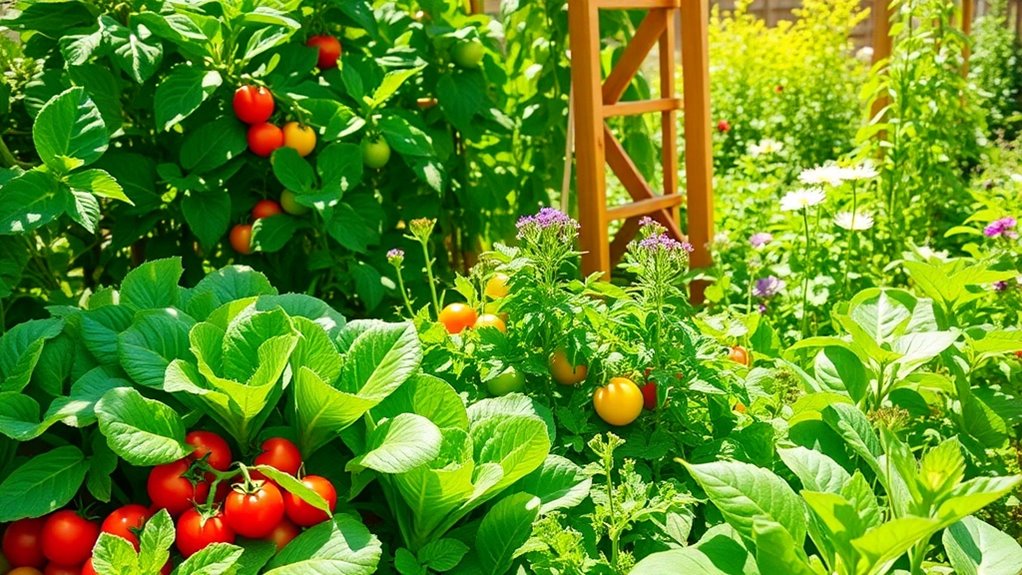Make a Mini Salad Garden That Re-Grows Every Week
A mini salad garden is like a small green revolution right at your fingertips. By cultivating fast-growing greens, you can enjoy fresh salads each week without the hassle of constant planting. Choosing the right containers and understanding proper care techniques are crucial for success. If you’re eager to learn how to set up this sustainable garden, the following insights will guide you on your journey to a continuous harvest.
Key Takeaways
- Choose fast-growing salad greens like arugula and lettuce that can be harvested weekly for continuous growth.
- Utilize lightweight, durable containers with drainage holes for easy maintenance and optimal root health.
- Plant seeds in well-draining soil and space them properly to promote airflow and minimize competition.
- Apply the cut-and-come-again method by snipping outer leaves, allowing inner leaves to mature for ongoing harvests.
- Ensure consistent watering and provide 4-6 hours of sunlight daily to support healthy growth and re-harvesting.
Choosing the Right Containers for Your Mini Salad Garden
When it comes to choosing the right containers for your mini salad garden, what factors should you consider?
First, think about size; containers need to be deep enough for root systems but manageable for your space.
Material matters too; opt for durable, reusable containers that withstand weather elements.
Drainage is crucial—ensure your containers have holes to prevent waterlogging.
Consider the location; lightweight containers are easier to move for optimal sunlight.
Lastly, choose eco-friendly options to support sustainable gardening. Additionally, selecting containers that are durable and reusable will help ensure the longevity of your mini salad bar.
Selecting Fast-Growing Salad Greens
After setting up your containers, the next step is selecting fast-growing salad greens that will thrive in your mini garden. Opt for varieties like arugula, lettuce, and spinach, which can mature in as little as 30 days. Consider using mesclun mixes for a diverse flavor profile. Ensure you choose seeds that are suited for your climate; check the seed packet for guidance. Additionally, look for greens with a high germination rate to maximize your harvest. Plant in well-draining soil, and space your seeds according to the recommended distance to promote healthy growth and minimize competition among plants. Adding reusable gardening techniques can further enhance the sustainability of your mini salad garden.
Planting and Caring for Your Salad Garden
How do you ensure your salad garden thrives?
Start by planting seeds or seedlings in well-draining soil, ideally enriched with compost.
Space your plants according to their mature size, allowing for airflow.
Water them consistently, keeping the soil moist but not soggy.
Use a balanced, organic fertilizer every few weeks to promote growth.
Monitor for pests, like aphids, and remove them promptly.
Mulching can help retain moisture and suppress weeds.
Lastly, ensure your garden receives at least six hours of sunlight daily. Additionally, consider selecting container types that suit your available space and aesthetic preferences to enhance your garden’s success.
Harvesting Techniques for Continuous Growth
To maximize the yield of your mini salad garden, employ strategic harvesting techniques that encourage continuous growth.
Begin by using the “cut-and-come-again” method, where you snip outer leaves while allowing the inner ones to mature.
Harvest in the morning when moisture levels are highest for optimal flavor and nutrition.
Always use clean, sharp scissors to prevent damage and disease.
Be mindful not to remove more than one-third of the plant at a time, ensuring enough foliage remains for photosynthesis.
Regularly check for new growth, and harvest young leaves frequently to promote a steady supply of fresh greens. Additionally, incorporating cut and come again greens can enhance your garden’s productivity and diversity.
Tips for Maintaining Your Mini Salad Garden
Maintaining your mini salad garden requires consistent attention to several key factors that promote healthy growth.
First, ensure your plants receive 4-6 hours of sunlight daily; if possible, rotate them to optimize light exposure.
Water them regularly, keeping the soil moist but not soggy—aim for about an inch of water per week.
Use organic fertilizers to provide essential nutrients, applying them every few weeks.
Regularly check for pests and diseases, addressing any issues promptly.
Lastly, prune your plants as needed to encourage bushier growth and prevent overcrowding. Additionally, consider plant selection to ensure you are growing varieties that are well-suited for indoor conditions.
With these practices, you’ll enjoy a thriving mini salad garden year-round.





